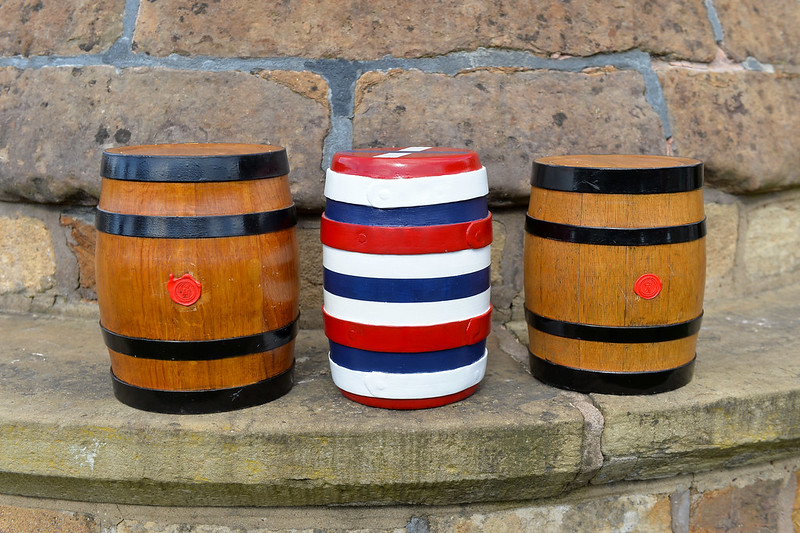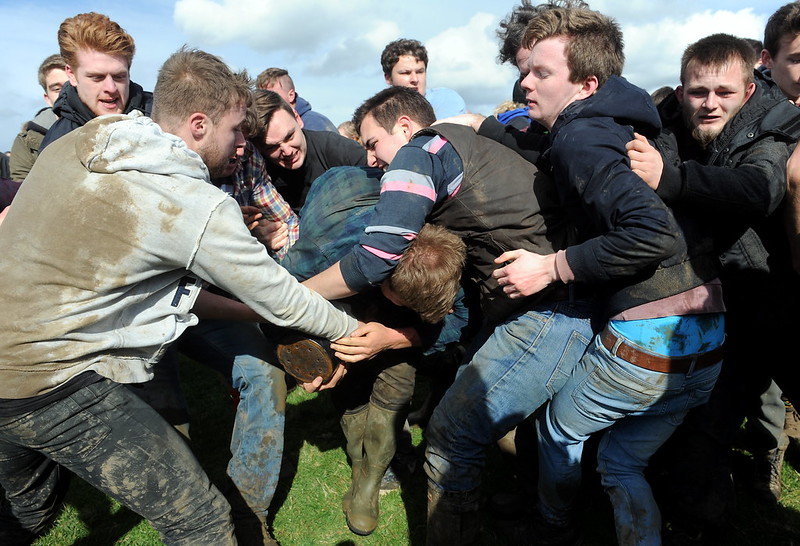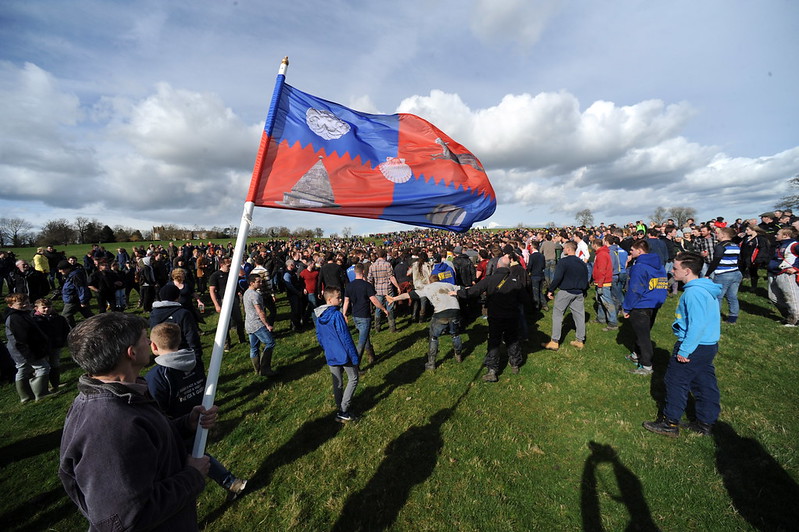In the village of Hallaton in Leicestershire, England, a unique tradition unfolds every Easter Monday. The residents of Hallaton and the nearby village of Medbourne engage in a spirited competition known as bottle kicking, where the goal is to move a “bottle” across two streams located a mile apart. This centuries-old event, dating back to the late 18th century, is considered by some as one of the country's longest-running sports, with claims of its origins reaching back to Roman times.

Photo credit: Duncan147/Flickr
Legend has it that the tradition started when two women from Hallaton were rescued from a charging bull by a startled hare, diverting the bull's attention. In gratitude for this miraculous intervention, the women gifted the hare to the church with the condition that, each Easter Monday, the vicar would provide a Hare pie, twelve penny loaves, and two barrels of ale for the less fortunate in the village. The Hallaton villagers would then engage in a lively contest, battling each other for the coveted food and drink.
During one such event, the residents of Medbourne joined the fray, seizing the opportunity to pilfer the barrels of ale. This incident marked the beginning of a longstanding rivalry between the two villages, with Hallatonians working together to reclaim their stolen spoils and setting the stage for the annual bottle kicking tradition that continues to this day.
The event starts with a parade through the villages of Medbourne and Hallaton with locals carrying a large hare pie and the three “bottles”, which are actually small wooden kegs. Two of these bottles contain beer, while the third, known as "the dummy," is a solid wooden keg painted in striking red and white colors.
The Hallaton vicar plays a role in the proceedings by blessing the hare pie before it is ceremoniously cut apart and tossed into the crowd for the 'scramble.' The remaining portions are collected in a sack and carried up the nearby Hare Pie Hill. Simultaneously, the bottles are transported to the Buttercross, a conical structure with a sphere on top historically used for keeping butter and cheese cool in the village's market town days. Here, the bottles are adorned with ribbons, and penny loaves are distributed to the eager crowd.
As the day progresses into the early afternoon, the hare pie is spread on the ground atop Hare Pie Bank. The initiation of the competition is marked by tossing each bottle in the air three times. The objective for the participating teams is to carry the bottles across two streams located a mile apart, using any means necessary. The contest is rugged and intense, with teams engaging in pushing, wrestling, and outright fighting to navigate the bottles over obstacles such as ditches, hedges, and barbed wire. The nature of the competition is such that broken bones and other injuries are not uncommon, prompting the presence of emergency services on standby.
The team that successfully moves the most bottles emerges victorious, and these intense games can last for over an hour each, often resembling a colossal rugby scrum. Locals even assert that the game of rugby draws inspiration from the spirited tradition of bottle kicking, noting that the shape of the rugby ball mirrors that of the small beer kegs used in the event.

Photo credit: Duncan147/Flickr
As the festival comes to an end, both participants and spectators head to the local pub to share drinks and engage in lively banter. The convivial atmosphere in the pub serves as a fitting conclusion to the day's fervent competition.
This bottle-kicking tradition has persisted for more than two centuries, becoming a cherished annual event. Only on two occasions has the game been canceled—once in 2001 due to concerns surrounding foot-and-mouth disease, and again in 2020 amid the global COVID-19 pandemic. Legend has it that back in 1790, the rector of Hallaton initially opposed the tradition due to its perceived pagan origins, attempting to ban the event. However, his stance changed overnight when the words "No pie, no parson" mysteriously appeared scrawled on the vicarage wall, prompting the rector to relent and allowing the tradition to endure.
The Guardian and the BBC has some great photographs of the event.



















Comments
Post a Comment